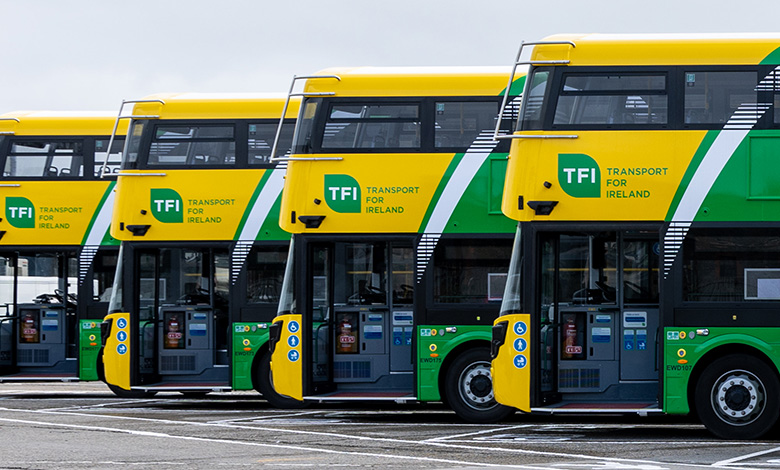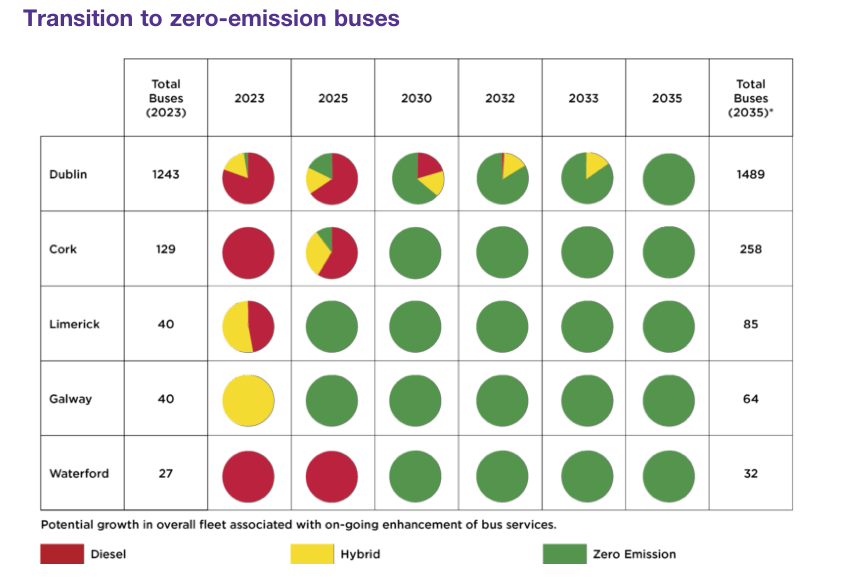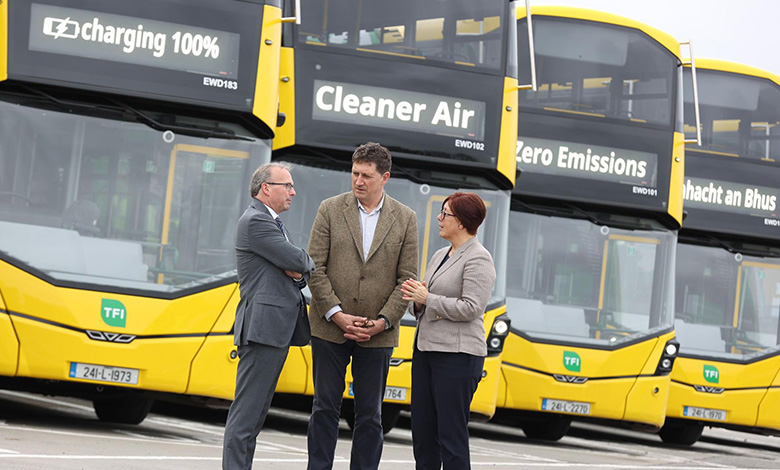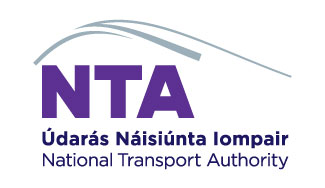NTA driving progress on BusConnects plans

NTA’s ambitious BusConnects programme is starting to make an impact with real progress across all aspects of the plan. As planning applications for infrastructure are granted, and as new routes and improved services are developed and implemented, we are beginning to see BusConnects deliver for people and communities in our cities, writes Anne Graham, NTA CEO.
The BusConnects Programme is a strategic national-level programme aimed at enhancing sustainable transport across five regions in Ireland—Dublin, Cork, Limerick, Galway, and Waterford.
The vision of the BusConnects Programme is to connect people and places through an enhanced bus system while also improving cycling and pedestrian facilities.
The scale and transformative potential of the BusConnects Programme reinforces its central role in influencing the future roadmap of Ireland’s transport system.
It delivers on commitments within the National Development Plan 2021-2030, the Transport Strategy for the Greater Dublin Area 2022- 2042, the Climate Action Plan 2023, and the National Planning Framework 2040.
Details of the Programme were announced in 2018, and now the plans are coming to fruition. Since January, An Bord Pleanála has approved the development of four new bus corridors in Dublin, marking a significant milestone for NTA. These corridors are part of our overall strategy to enhance the efficiency and reliability of the bus network in Dublin and its surrounding areas.
Each of these corridors: Clongriffin; Liffey Valley; Ballymun/Finglas; and Belfield/Blackrock are designed to address specific areas of need by making bus services more useful for more people.
These bus corridors will not only benefit passengers by providing faster and more reliable bus services but will also help to reduce congestion and air pollution in Dublin. By encouraging more people to use public transportation, the NTA is contributing to a more sustainable and environmentally friendly transport system.
Overall, the approval of these four bus corridors marks a significant step forward for public transportation in Ireland, and the NTA’s efforts to improve the bus network are sure to benefit passengers and the environment for years to come.
It is expected that the first two contracts will commence construction in the first half of 2025, followed subsequently by the award of an additional two schemes for construction.
Implementing the redesigned network of bus services for Dublin, a related but separate part of BusConnects, is making even more progress.
The re-imagined network is based on a structure of eight high-frequency spines, augmented by new local, orbital, and radial routes.
This will mean more frequent services particularly at off-peak and at weekends, new 24-hour services, and better connectivity and coverage including more orbital connections.
Following three rounds of public consultation that began in 2017, the NTA finalised and published the new Dublin area bus network in September 2020. The overall objective of the new network is to provide a network that better meets the needs of the overall region, taking into account the growing population and changing travel patterns.
Key characteristics of the proposals include a simpler network centred on eight main spines labelled A to H, more frequent services, particularly off-peak and at weekends, plus better coverage of the city including more orbital connections.
This new bus network plan took into account feedback provided by over 72,000 submissions at various stages of public consultation.
Key performance indicators (KPIs) are being used to measure the progress and realisation of network redesign and the broader BusConnects Dublin Programme benefits as the project rolls out. These KPIs include passenger boardings, punctuality, regularity, reliability, and access to opportunities, with improvements reported across the board as the phases are rolled out.
The increased coverage and frequency of services associated with the Network Redesign Phases introduced to date have resulted in a large increase in the number of people in Dublin who have access to frequent public transport services to avail of employment, retail and social opportunities.
The new network is being implemented over 11 phases. Five of those are already complete, with two more to be delivered by the end of 2024.
The response by the travelling public has been very positive, with passenger growth in areas where the new network is in place substantially outperforming the growth on the rest of the network.
We hope to provide similar improvements to networks in our regional cities.
After two rounds of public consultation in Cork city, we are planning to increase overall services by over 50 per cent starting in 2025. This will include two 24-hour bus services, seven all-day high-frequency bus routes, and brand new routes to previously unserved areas such as Upper Glanmire, Waterfall, and Kerry Pike.
The new network for Limerick city is scheduled to be introduced in 2025. Under this plan, service levels are to increase by 70 per cent, thanks to the extension of bus services to new areas, more routes with frequent services, and an enhanced Sunday timetable. We also want to introduce a new 24-hour bus service operating between University Hospital Limerick, the city centre and the University of Limerick.
For Galway city, the new bus network will enable more people to avail of public transport resulting in increased access to a greater number of schools and workplaces across Galway city, Bearna, and Oranmore. Under the new plan, 67 per cent of residents will live within 400 metres of a high-frequency bus route.
Meanwhile, public consultation for a new network in Waterford city is getting underway in July 2024.
Transitioning to zero-emission vehicles is a core aspect of the BusConnects programme and there are now battery-electric buses operating in three centres, with NTA taking the lead in procuring and purchasing the vehicles to be deployed on our city and town services.
Bus Éireann’s town service in Athlone became fully-electric in January 2023, and earlier in 2024, thanks to €54 million investment by NTA, a total of 34 new state-of-the-art double-deck battery-electric buses became operational on their city services in Limerick, with a further 21 to follow. Progress is also being made with Dublin Bus. At the end of last year, NTA investment enabled the electrification of their Summerhill depot, followed earlier this year, by the Phibsboro depot. By August 2024, some 100 zero-emission vehicles will be operational in the Dublin fleet, offering a better experience for customers and cleaner air for the city.
The NTA intends that 85 per cent of the Dublin Metropolitan Area urban bus network will be operated by low and zero-emission buses by 2032, and solely by zero-emission buses by 2035.
BusConnects also provides for a major programme of investment in Next Generation Ticketing (NGT). The ticketing system on rail and bus is approaching the end of its useful life and requires updating to a more modern, faster and more efficient system.
As part of the BusConnects Programme, a new ticketing system will be introduced which will incorporate the latest developments in account-based ticketing technology, including allowing the use of credit/debit cards or mobile devices as a convenient means of payment. It will also facilitate more ticketing innovations which cannot be currently provided in the existing system, as well as allowing for a more efficient process of altering fares.
Following a highly competitive procurement process, the NTA awarded, in April 2024, an overall framework contract for the design, supply, installation and operation of a new multi-modal ticketing system to a Spanish information technology company – Indra Sistemas S.A. – who have designed, installed and operated similar systems internationally.
This is a large and complex technology project and it is likely to take three to four years to fully roll out the new system. Exact timelines will be finalised in the coming months as the newly appointed supplier commences the detailed design stage of the project.
BusConnects also promised a simpler fare structure, and for the Dublin area, this was introduced in November 2021.
The central component of the new structure is a 90-minute fare (TFI-90) that allows customers to seamlessly switch between any combination of bus, DART, commuter rail and Luas services at no extra cost subject to commencing the last leg within 90 minutes of first boarding.
The new system has dramatically improved the ease and convenience of movement between different modes of transportation and different services of the same transport mode, opening up exciting new travel opportunities for many people.
The TFI-90 fare currently stands at €2, offering unprecedented value to all users.
The BusConnects Dublin Programme includes the construction of enhanced bus stops and shelters across Dublin to align with the redesigned network and Core Bus Corridors.
Along the 12 Core Bus Corridors, enhanced bus stops, most to be equipped with bus shelters and real-time passenger information signs, will be provided as part of the construction of the individual corridors.
Along the other sections of the new bus network, new TFI bus poles are being installed in tandem with the roll-out of the different phases of that network.
The BusConnects Programme represents a transformation of the city bus service. Rather than focusing solely on individual projects, BusConnects adopts a holistic approach for the Programme to deliver outcomes that exceed the sum of its parts. By seamlessly integrating bus corridors, cycling infrastructure, pedestrian pathways, new routes, fares, livery, stops and shelters, zero-emission fleet and a new ticketing system, the Programme aims to improve the bus service in a way that brings more value to the user than benefits from individual projects.
Although benefits have already been realised on components of the BusConnects Programme initiated to date, it will continue to deliver for the public well into the future.
While the implementation of the various aspects of BusConnects is only now gathering pace, the benefits are already being felt.
Zero-emissions vehicles now in operation offer a better experience for customers and cleaner air for communities.
The new network is already providing earlier starts and later finishes, more 24-hour services and new orbital routes. This enhanced connectivity is creating a public transport system that is more useful to more people, with members of the public responding by using city bus services in greater numbers than ever before.
The TFI-90 fare has made it easier than ever to interchange from one service to another or one mode to another and offers great value to all users.
And there is more to come.
The completion over the coming years of our core bus corridors, with the bus priority they offer, will lead to faster bus journeys, along with greater punctuality and reliability, making the bus an even more attractive option.
The new network, when completed, will mean that whether it is for work, learning or socialising, all users will benefit from greater connectivity and integration, encouraging more people to get on board.
This is what BusConnects is all about. Connecting people and places by putting the bus at the heart of our cities.
T: +353 1 879 8300
E: info@nationaltransport.ie
W: www.nationaltransport.ie









